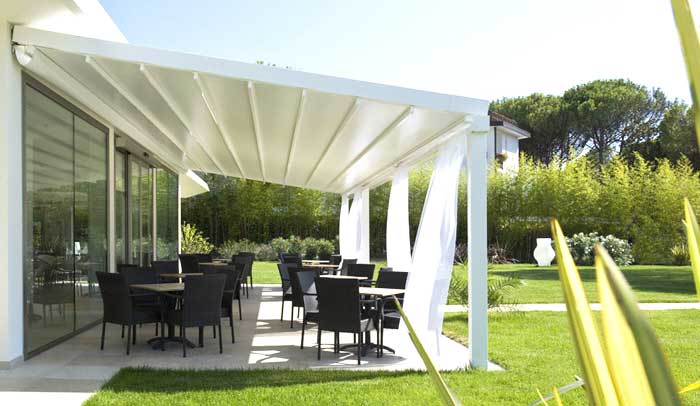The surface is the primary visual part in a retractable awning. It is both the most enthusiastic and most sensitive segment in retractable awnings. Any wear, tearing, obscuring, or rot on the surface expeditiously lessens the overall sensibility of a retractable awning, whether or not the edge and ruffle of the awning are sound.
Since the surface of the awning is so huge, a lot of examination and advancement is intended for improving retractable awning surfaces. There are basically two huge camps for surfaces: ordinary cotton and course of action shaded acrylic. The best approach to understanding the best retractable awning surfaces lies in knowing both the chronicled scenery of awning surfaces and the advancement of present day surfaces.

The Demand of Outdoor Fabrics
Surfaces on retractable awnings need to withstand a huge load of common abuse. Outdoors surfaces of each sort – cotton duck to vinyl to acrylic – face colossal wear and mentioning conditions tende da sole brescia. Mechanical mischief, for instance, tearing and fraying, can arise out of generous breezes or the load from storm, three day weekend, or debris. (This is the slightest bit of slack of retractable awnings; closing the awning shields it from such weights.)
The veritable beating wear on awning surfaces, nonetheless, begins from standard environment:
Sun and UV hurt
Warmth and cool
Sogginess
Development
Junk and buildup
This causes obscuring, tearing, and staining. Outside surfaces, by then, need to sort out some way to contradict these normal components.
Cotton and Early Awnings
Awnings are an old plan show, returning to the Greeks and Egyptians. Before all else, awnings were made with woven leaves, which segued into material. In the nineteenth century, awnings had fairly a renaissance in Europe as both a stylish and practical window dressing. Around at that point, awning surfaces were by and large cotton duck, an oiled material that was significant and somewhat water repellent and used for boats’ sails.
Cotton material remained standard well into the mid-20th century. To be sure, even now, material is at this point a commonplace (anyway decreasingly notable) awning surface. Another great situation for cotton is piece shading. Piece-shading cotton – the most notable strategy for outside uses – makes dynamic concealing, likely the most flawless in surfaces. In piece-shading, the cotton is lowered in hot liquid tones, by then obliged through rollers to attempt to out the concealing and remove the excess.
Piece shading is not without disadvantages. It is done on full electrical releases, not particular strings, so it is only helpful for solid tints. To get stripes or various models, the separating shades should be painted on, which is not particularly intense and makes a level, lopsided improved perception. Piece-shading is furthermore exposed to normal wear from sun, UV radiates, and even tenacity and salt water.